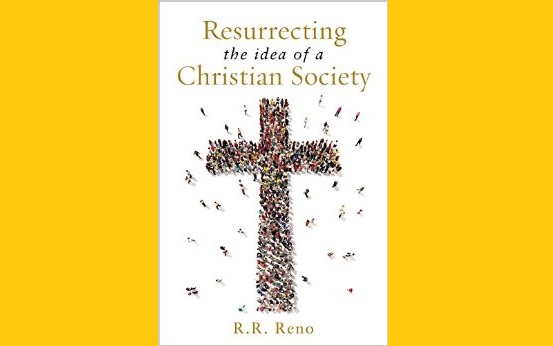A friend of mine lives in one of Philadelphia’s comfortable suburbs. She and her husband are both attorneys. Both hold Ivy League degrees. Their community is nearly 90 percent white, rich in Quaker history, above average in education and income, and low in crime. People are friendly. Nights are quiet. Streets are clean and safe. Real estate is well-groomed and priced accordingly. In other words, it’s a town better known for its merit class credentials than its angry bigots.
So she thought it odd when lawn signs recently started popping up in her neighborhood with the slogan “Hate Has No Home Here.” In her view, in her manicured corner of the woods, hate was already homeless, but apparently this was not so. How had it gone unnoticed?
With a little digging, she found that “Hate Has No Home Here” is a transplant. It’s part of a campaign begun by Chicago’s Hollywood-North Park Community Association and now spreading nationally. In the words of the campaign’s website, “The Hate Has No Home Here Project promotes just and inclusive communities by encouraging neighbors to declare their homes, schools, businesses, and places of worship to be safe places where everyone is welcome and valued.” Despite the coincidence of its founding in November 2016—the same month as Donald Trump’s election—the campaign is avowedly non-partisan and non-sectarian.
Again, from the website: the lawn signs are “a public declaration that hate speech and hateful actions against others will not be tolerated by the person or organization displaying the sign. In that, it is non-partisan.” The signs are a statement that, “while it is okay to disagree with others civilly regarding issues, it is not okay to intimidate or attack a person or group—verbally or physically—based on attributes such as gender, ethnic origin, religion, race, disability, political party, or sexual orientation.”
Start your day with Public Discourse
Sign up and get our daily essays sent straight to your inbox.Feelings of this sort are obviously admirable, and the spirit behind the campaign is clearly sincere, which is why many good people support it. It was St. Paul, after all, who urged us to speak the truth with love. Truth without love is a hammer. We can easily abuse it to pound those we dislike. The feeling of righteousness is deliciously addictive, and all the more so when the hurt we inflict on others seems justified by service to higher convictions.
But there’s a hitch. The trouble comes in applying good sentiments to real situations. “Hate” is a word that hangs in the air like the scent of dead flowers. It’s clinging, ambiguous, and ugly. Like truth, it’s easily manipulated for political ends. For example, what exactly qualifies a community as just and inclusive? Do we really need to declare our homes and places of worship as safe spaces? If so, safe from what and from whom?
For Christians in particular, such disavowals of “hate” prompt more questions than they answer. Is biblical teaching about sex a form of hate speech? Is religious criticism of same-sex marriage motivated by fear and bigotry? Is the exclusion of sexually active gay couples from leadership in a parish or Christian ministry vindictive? In religious matters, who gets to define what words like “hate” and “hateful” mean—the community of belief and its ministries? The person who claims to be hurt or excluded? Or perhaps a state that claims to be religiously neutral?
These questions aren’t theoretical. They’re being asked and answered right now with unpleasant legal results in other developed countries. They’re being pressed in our own country with growing force. They have deep implications.
Of course, as my lawyer friend says, lawn signs are modest things. Yet they’re not without meaning. In a way, they’re weathervanes of public opinion. Just a few years ago, the phrase “marriage equality” and bumper stickers with an equals sign became the cutting-edge of same-sex activism in redefining marriage and family. “Hate Has No Home Here” has the weakness of being more diffuse as a theme, but it has the same happy advantage of requiring no serious thought from anyone who assents to it. After all, is anyone actually in favor of hate?
For most people, the campaign’s lawn signs show a laudable concern for the outcast. For others, they’re a simple expression of good will. And for some, they’re also a form of moral preening and of shaming their unenlightened neighbors. In any case, whatever their motive, lawn signs and slogans do not a better nation make. That takes patience, careful thinking, and sustained work—all things that are in short supply in our current, emotivist cultural climate, and things that we need right now.
Eighty years ago, in a radio talk later appended to his great essay “The Idea of a Christian Society,” T.S. Eliot noted that
between the Church and the World, there is no permanent modus vivendi possible . . . The Church exists for the glory of God and the sanctification of souls: Christian morality is part of the means by which these ends are to be attained . . . To accept two ways of life in the same society, one for the Christian and another for the rest, would be for the Church to abandon its task of evangelising the world. For the more alien the non-Christian world becomes, the more difficult becomes its conversion.
When Eliot spoke and wrote from Britain in the late 1930s, much of Europe was already either fascist, national socialist, or communist. The impulse to contrast English “Christian” values with the murderous regimes on the Continent was strong. But Eliot was skeptical. He argued that Britons (like people in most democracies at the time) actually lived at a crucial moment of choice between a receding Christian society and an emerging pagan one. Liberalism, with its instinctive disdain for religion, had undermined its own moral coherence. As a result, despite formal professions of Christianity, Eliot said, “we conceal from ourselves the unpleasant knowledge of the real values by which we live. We conceal from ourselves, moreover, the similarity of our society to those which we execrate . . .” He saw that democracies too can be totalitarian. Their forms of coercion may be more congenial and less thuggish, but that only makes them more effective.
Eliot finished his essay just as war with Germany began. The world today is a different place, but perhaps it is not so different as we’d like to believe. In Resurrecting the Idea of a Christian Society, R.R. Reno revisits with insight and grace the issue so central to Eliot: will “the West seek a Christian future or a pagan one?”
The question is urgent. The reason is simple. In Reno’s view, despite its widely touted concern for the poor, “today’s progressivism is waging a war on the weak.” America’s merit class talks a great line about equality, social justice, and rooting out hatred. And it delivers on some of its promises. But meanwhile, “we’re leaving behind the democratic era and heading toward a meritocratic one [that] justifies the wealth and power of its elite on the grounds of their competence and achievements rather than on popular assent.” For Reno, America’s leadership class—once white, Anglo-Saxon, and Protestant, now racially and ethnically more diverse and largely secular, but still just as elitist—is ultimately concerned with advancing its own interests.
This isn’t a new thought. Christopher Lasch said much the same thing decades ago, but Lasch wasn’t a believer. Reno writes with a lively Christian confidence and exceptional clarity, care, and depth.
Other recent books in the same “crisis and renewal” genre have had better marketing, more dramatic titles, or more spotlight-friendly authors. But none has had the uniquely reassuring spirit and methodical logic that shape Reno’s entire text. The author has several great strengths: a distaste for hysteria, a refusal to panic in the face of seemingly ugly data, and the patience to hear the real notes of a problem through the noise and confusion that dominate today’s cultural debates.
For example, Reno very shrewdly points out that, while “Nones” are growing and self-described Christians are declining as elements of the US population, the actual percentage of practicing, churchgoing Christians has barely changed in decades. What’s different today is the lack of social stigma attached to unbelief. More people are simply telling the truth about what they believe (or don’t). So we have reason for concern, but not for manning the lifeboats.
Like Eliot before him, Reno knows the value of religious feeling. But also like Eliot, he argues that a culture that substitutes lawn signs and slogans for moral substance can only be renewed by the rigor of Christian thought and the actions that flow from it. The author explores those practical consequences in chapters that focus persuasively on defending the weak, raising up the poor, promoting solidarity, limiting government, and seeking higher things.
Reno has a good command of the social science data that shape our national trends, and his analysis makes for a bracing read. But in the end, this is a book for the average Christian looking for hope. The central message of this text is that even now, faith in Jesus Christ is alive in our nation, and even now it can humanize and morally renew the nation’s future. We are the leaven. We make the difference. Nothing is pre-determined . . . except for one result, as he reminds us in the book’s final words: “The future is God’s.”













